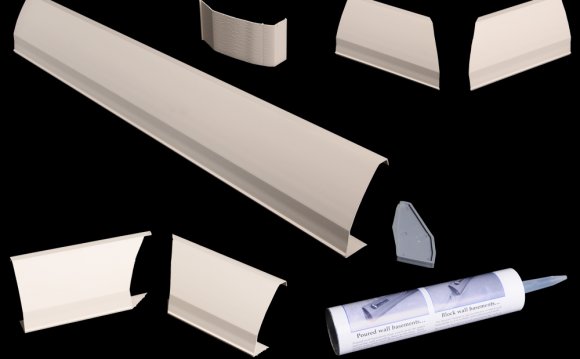
Waterproofing your basement may seem like a giant task especially if you have a larger basement than most. However, with Ames'® liquid rubber seal, waterproofing the basement will be an easy endeavor. Easy to apply, our seal will cover any seam or crack in the room. Sealing it from any moisture or pests. Durable to last, your basement will be sheltered for years to come! We offer several high quality products to help you restore and protect your basement interior. Choose from products that help waterproof with liquid rubber and easy to use seam tape that will help seal area with water leakage or access to small pests. Contact Ames'® Research laboratories today to learn more about how our products can help you protect your basement interior.
Preparation:
Be sure surfaces are clean and dry before the coating application. Read all label instructions before beginning. Always run a test patch first in an inconspicuous area to ensure that proper adhesion and drying occurs and the product works to your satisfaction.
Application:
Directions are the same for both Ames' Blue Max and Block & Wall Liquid Rubber. They do not need a primer. Caulk all cracks greater than 1/8" wide with Ames' Blue Max trowel-grade. Surfaces with joints, cracks, or where two unlike surfaces come together, require Ames'® Peel & Stick Seam Tape (PS250, PS450 or PS650) to provide some additional strength and reinforcement. It is important to seam tape all joints and cracks to avoid future cracking and leaking. Prime all surfaces generously with Ames' Blue Max prior to setting the Seam Tape in place. Apply a liberal topcoat of Ames' Blue Max or Block & Wall Liquid Rubber over the Seam Tape and allow to cure.
Tools:
Both Ames’® Blue Max and Block & Wall Liquid Rubber can be applied with a paint brush, a push broom, a low nap roller with a long handle or a Commercial Airless Sprayer. In addition, you will need Ames® Peel & Stick Seam Tape and scissors or a utility knife. For larger commercial jobs. We recommend an airless sprayer with a 3/8 inch, 150 foot hose. Graco, Bulldog or Titan work well. Call for specific specification.
Estimated Coverage:
We recommend three gallons per 100 square feet for water containment. Shake or prior to use. The application must be applied in a continuous, unbroken seal of a minimum dry thickness of no less than 30 mils (the thickness of a dime). Two coats minimum, three to four is superior. More coats equal longer life. Rough surfaces will require additional product and drying time.
Weather & Drying Guidelines:
Both Ames’® Blue Max and Block & Wall Liquid Rubber are best applied between 50° to 90° F (10° to 32° C) on warm dry surfaces. For exterior applications apply when the streets are dry, the sun is in the sky and no inclement weather is forecast. Starts to dry in 30 minutes to 2 hours, depending on thickness of application and weather. It continues to cure for up to 2 weeks. A slight tack is normal after drying. Ames' Blue Max may be recoated or top coated when it is dry to the touch. Low temperatures, high humidity and evening and morning dew will require increased drying/curing time.
Clean-up, Storage, and Disposal:
Clean tools and small spills with water. Store unused product in its original container, tightly sealed and protected from freezing. Dispose of this product in accordance with local, state, or federal requirements.
Can be used in Conjunction with: Ames' Blue Max trowel-grade and works well as a primer and waterproofing membrane for Ames'® Safe-T-Deck™, Ames'® Snow Seal®, Ames'® Maximum-Stretch™, Ames'® Block & Wall™, Ames'® Iron Coat™ and many other coatings. Ames' Blue Max must be top coated for UV protection in exterior applications.









